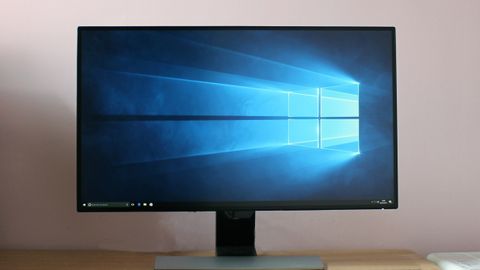TechRadar Verdict
BenQ’s screen has good screen quality across most of our benchmarks, and it has a solid resolution, size and on-screen display. That makes it a fine companion for the home or the office, and it’s bolstered by some clever features elsewhere. That said, we wish the stand and port selection were both more versatile.
Pros
- +
Consistent image quality
- +
Good Brightness Intelligence feature
- +
Large size
- +
QHD resolution
Cons
- -
Mediocre port selection
- -
Poor stand adjustability
- -
Mediocre screen modes
Why you can trust TechRadar
The BenQ EW2770QZ is a large, solid screen that serves up interesting new technology across its 27-inch frame – but its $590 (about £454, AU$770) price looks a little high for a product that doesn’t hit 4K.
Instead of offering headline-grabbing features, though, BenQ is trying to make this panel a jack-of-all-trades unit that can get the job done at the office and with entertainment.
Design and Features
The headline figures on the BenQ’s spec sheet are all eminently sensible. The diagonal screen size of 27-inch and resolution of 2,560 x 1,440 are good for work and play: there’s more screen real estate for multiple windows and applications, and plenty of room to make 1080p footage look its best.
The BenQ’s density level of 109ppi (pixels per inch) is solid – enough to provide crisp detail and ample screen space without having to rely on Windows 10’s scaling settings, which sometimes don’t play ball with third-party applications.
It’s possible to see individual pixels if you look closely, and that’s something you won’t find on a sharper 4K panel, but 27-inch screens with this QHD resolution are proving more popular – and that’s only a good thing. The BenQ has a matte finish, too, which makes it easier to see the screen under bright office lights.
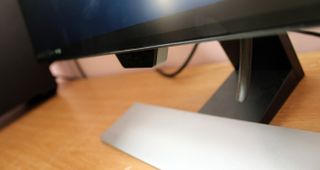
This BenQ’s size and resolution make it a versatile bit of kit for the home and office, but it does have its downsides. The biggest is the lack of 4K – that means you won’t be able to watch films at their best clarity levels. There aren’t any syncing features, either.
BenQ has turned to the familiar and reliable IPS technology to build this screen. These panel tend to deliver great colour accuracy, consistency and viewing angles, although they sometimes suffer when it comes to response times and contrast.
It’s an 8-bit panel, which means it can display 16.7 million colors – plenty for most, although still short of the billions pumped out by proper 10-bit screens. Still, it’s bolstered by 100% sRGB coverage and an 82% figure on the Adobe RGB scale. It’s a 5ms panel, which means it’s fast enough for gaming and movies – only the keenest eSports players will notice any ghosting, artefacts or display delays.
The usual media and gaming screen modes are present, along with a dedicated sRGB option. There’s also a Rec. 709 mode, which adheres to high-definition TV standards.
This screen has another trick up its sleeve. It’s called BI+, or Brightness Intelligence, and it’s designed to calibrate the screen on the fly to reflect atmospheric conditions – so the BenQ will tweak its own brightness, contrast and saturation to maintain image consistency.
The feature uses a tiny camera that sits beneath the bottom bezel. By default, a small icon on the screen indicates when the screen is changing its settings, and the alterations are obvious – the brightness and colour temperature will sometimes change quickly and drastically.
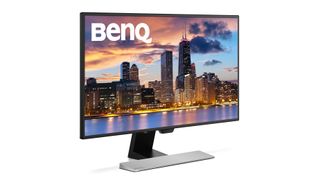
The Brightness Intelligence system generally works well – it quickly reacts to changes and does a solid job of maintaining the user’s perception of the screen. It’s also important for keeping eyes in good condition – this screen will reduce the backlight strength when it’s light, or pump up the backlight during darker moments.
The Brightness Intelligence icon can be switched off in the on-screen display, and the entire affect can be made more subtle. Brightness Intelligence can also be switched off if you need the screen to be consistent rather than reactive.
The BenQ’s broad brief means the firm’s designers haven’t taken any risks on the outside. The bezel is an impressive 8mm-thin, and the screen sits on a smart metallic stand. That same material covers the rear of the unit, and the stand attaches using the conventional clip-on method.
It’s a sturdy panel, although we do wish its solid internal specification was paired with more versatility on the outside.
There are two HDMI ports and a DisplayPort connector, for instance, but no USB ports, and only one audio jack. There’s no DVI-D or D-SUB, which may make this screen tricky to use with older PCs.
And, while the BenQ tilts backwards and forwards and does have a VESA 100mm mount, that’s it for ajdustability – the panel doesn’t swivel, there’s no height adjustment, and the screen can’t rotate.
The on-screen display is managed by a vertical row of buttons around the back of the screen. They’re pleasingly snappy, and the menu itself is responsive and easy to navigate, even if it doesn’t look as sharp as what you’ll find on some other monitors.
Brightness Intelligence aside, there’s little new here, with options to adjust brightness, contrast and colour levels, switch between pre-configured screen modes and adjust the quick-access options.
There are two 2W speakers in this panel, although they’re nothing special – they’re weedy and lack volume, so you’ll want discrete units for gaming, movies or music.
Screen size: 27-inch
Native resolution: 2,560 x 1,440
Aspect ratio: 16:9
Refresh rate: 60Hz
Pixel density: 109ppi
Response time: 5ms
Viewing angle: 178°/178°
Brightness: 350cd/m2
Contrast ratio: 1,000:1
Ports: 2 x HDMI 1.4a, DisplayPort 1.2, 1 x audio
Built-in speakers: 2 x 2W
Dimensions: 614 x 461 x 198mm (WxDxH)
Weight: 5.9kg
Warranty: 3yr RTB
Performance
First things first: to get proper results out of this screen, we reset the panel to its factory settings and then disabled Brightness Intelligence to avoid any chance of the panel altering its output mid-benchmark.
The BenQ’s initial benchmarks were solid. Its brightness level of 303cd/m2 is fine, and its black level of 0.34cd/m2 is similarly acceptable – not as low as other screens, perhaps, but not high enough to hinder work tasks, games or movies.
The factory contrast level of 891:1 is acceptable, too. It’s a little way short of BenQ’s quoted 1,000:1 figure, but it’s high enough to give images, films and games punch across the board.
The initial color temperature of 6,116K is on the warm side, but just barely – you won’t notice a difference. The Delta E of 3.04 is fine, and the sRGB coverage level of 99.2% barely deviated from BenQ’s initial claims.
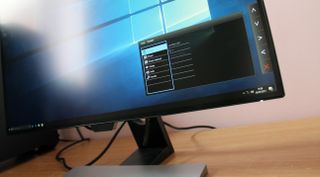
Dropping the brightness to a more conventional 150cd/m2 saw the BenQ maintain its good performance. Contrast improved slightly to 937:1 and colour temperature remained steady, while the Delta E improved to 0.77 – a better figure, largely due to the backlight being at a more reasonable level.
The Brightness Intelligence mode, meanwhile, dropped the brightness level in our testing area to 164cd/m2 but kept the black level at 0.29cd/m2, which saw contrast drop to 566:1. That’s poorer than the factory settings, and it meant that images looked a little flat – and the colour temperature of 5,120K saw the screen feel saturated compared to factory settings.
The BenQ’s factory settings rarely stray above “good”, no matter what brightness level is used, but at least they’re consistent. You’re going to get solid image quality, no matter the task.
The BenQ has excellent uniformity, which bodes well for image consistency and viewing angles. Its biggest brightness variation was a swing of 10% in the top-left corner, and it changed by 5% or less in every other sector of the panel, with colour temperature having even smaller changes.
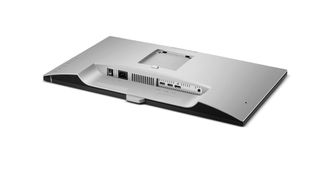
The BenQ’s screen modes had varying impacts on our benchmarks. The sRGB option delivered an improved Delta E of 1.55, but that’s still not as good as proper, professional work screens – and it was largely the same in other departments. The Rec 709 option, meanwhile, dropped the brightness to just 76cd/m2 and maintained similar levels in every other test.
The Cinema option kept most of the BenQ’s factory settings the same but improved the Delta E to an excellent 0.9, which helped colours deliver exceptional vivacity and punch – this is what we’d use, day-to-day, albeit with the brightness toned down.
The Photo and Gaming modes are less impressive. Both pump their color temperature results up to beyond 9,000K, which is far too cool – the screen had a cold, blue pall across the surface that was especially visible in lighter areas. Neither option had much impact on contrast, black level or Delta E.

Verdict
BenQ’s screen doesn’t excel in any particular area – instead, it performs well in a whole host of departments, proving that it’s got versatility alongside solid image quality.
Its factory settings churn out consistent benchmark results, with good color, brightness and contrast levels, and its uniformity is impressive. The size and resolution are pleasing for a whole variety of reasons, and the Brightness Intelligence system makes a decent go of adapting the screen to your surroundings – although it’s worth deactivating if you need consistent image quality.
However, the BenQ isn’t without problems. We wish it had more ports and a more versatile stand, and its screen modes aren’t much cop. It’s a little expensive, too, at $590 (about £454, AU$770).
There’s still plenty to like, though, thanks to good image quality, a solid resolution and some welcome extra features. It’s a fine choice for a versatile home or office screen.
- Check out our list of the best monitors of 2017
Mike has worked as a technology journalist for more than a decade and has written for most of the UK’s big technology titles alongside numerous global outlets. He loves PCs, laptops and any new hardware, and covers everything from the latest business trends to high-end gaming gear.
